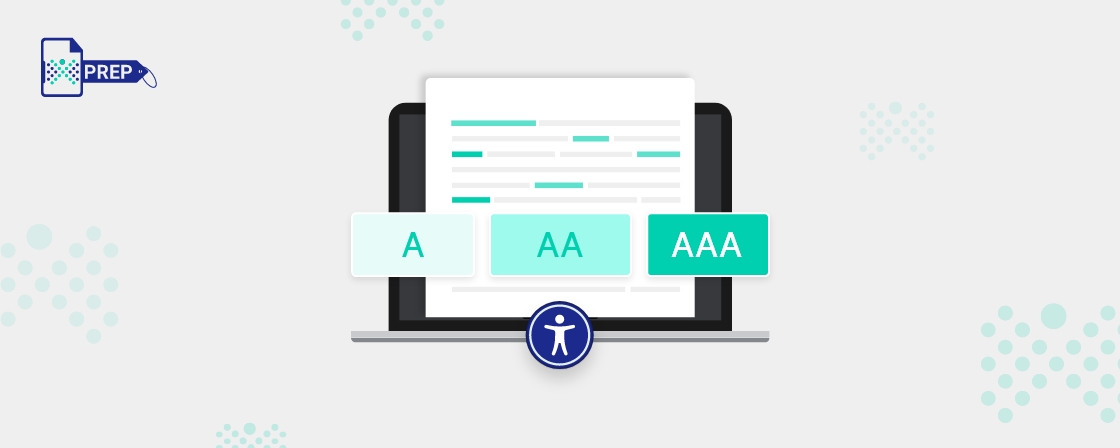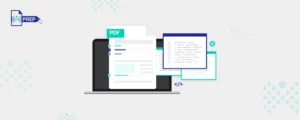Key Takeaways
- WCAG 2.1 consists of three compliance levels: A, AA, and AAA.
- WCAG provides guidelines for what an accessible website should accomplish at each level, from minimal, acceptable, to ideal accessibility.
- The conformance levels are based on the four principles of WCAG known as POUR: Perceivable, Operable, Understandable, and Robust.
- Level A is the minimum conformance level, Level AA is the mid-range conformance that is widely accepted, and Level AAA is the highest.
What is WCAG Compliance?
WCAG stands for Web Content Accessibility Guidelines. It is a set of internationally recognized guidelines developed by the Web Accessibility Initiative (WAI) of the World Wide Web Consortium (W3C). These guidelines provide a framework for making web content more accessible to people with disabilities.
The primary goal of WCAG is to ensure that websites and digital content are designed and developed in a way that allows all users, regardless of their abilities, to perceive, operate, understand, and interact with the content effectively. This includes individuals with visual, auditory, cognitive, and motor impairments, as well as those with other disabilities.
Understanding WCAG Compliance: Levels A, AA, and AAA
Accessibility compliance paves the way for a future with universal access for all. It is an ethical investment that benefits everyone, especially those with disabilities. The goal is to create high-quality websites that do not exclude a particular group. But how do you determine what makes your content web accessible? The Web Content Accessibility Guidelines, or WCAG version 2.1, has set international standards for web accessibility to meet the needs of individuals and organizations. This blog post answers your questions about different WCAG compliance levels: A, AA, and AAA.
What are the Levels of WCAG compliance?
The latest version, WCAG 2.1, consists of three compliance levels: A, AA, and AAA. Each level includes guidelines that aim for web accessibility for different groups of users depending on their specific needs.
Level A: The minimum conformance level with basic guidelines for an accessible website.
Level AA: The mid-range conformance level includes Level A and additional guidelines. Most organizations try to attain this level.
Level AAA: It is the highest level that includes Level A, AA, and AAA guidelines.
Let’s take a look at each of the WCAG compliance levels.
WCAG 2.0 Level A
Level A is the minimum conformance level where websites must follow all the Level A success criteria. The success criteria are easy to achieve with the least impact on the website structure. At this conformance level, web content will still have some accessibility barriers. Accessing its information will be challenging or impossible for many users with impairments. Some of the basic requirements are as follows:
- Alt text for images
- Easy to navigate with a keyboard
- Descriptive transcripts for pre-recorded audio or video media
- Content that is not based only on shape, size, color, sound or other sensory characteristics
- Avoiding audio or video that plays automatically
- A pause, stop, and hide option for moving elements like videos
WCAG 2.0 Level AA
Level AA conformance defines a higher level of accessibility. Most accessibility laws and regulations, including the ADA, apply to this level.If a website is used and understood by most users with or without disabilities and meets Level A and Level AA success criteria, it is considered to have WCAG 2.1 Level AA accessibility.
Following these criteria will eliminate significant barriers to accessing web content. However, access to information may be a problem for some users. The WCAG 2.1 Level AA criteria include the following:
- The color contrast of text is 4.5:1
- Navigation elements are to be consistent
- Headings are to be used in a logical order
- Captions for live audio and video media
- Web forms should have accurate labels
- Content should be available on both vertical and horizontal device orientations
WCAG Level AAA
A website must meet Level A, Level AA and Level AAA criteria to reach this highest level of conformance. Achieving this level makes your website accessible to most users. It improves the user experience for individuals with disabilities and the elderly. But Level AAA compliance is not easy to achieve for all content. While this is the optimum level of conformance for full web accessibility, the W3 does not recommend it as a general rule, as specific content cannot meet all Level AAA compliance requirements. Some notable Level AAA web accessibility requirements include:
- Provision for sign language interpretation
- Provision for audio description for audio and video content
- Color contrast is at least 7:1
- Flashing blocks of content is not advisable
- No time limit on browsing a website
- Provision for color switch and text resizing
- Background audio should be avoided
Conclusion
While these guidelines seem intimidating, understanding the different WCAG conformance levels can help make your digital content more accessible to your audience, improve your online presence, and prevent lawsuits.
Explore what web accessibility could look like for you with PREP. Our combination of automation, advanced artificial intelligence (AI), and other innovative deep learning technologies make digital accessibility simple, accurate, and fast. Meet the latest WCAG standards, Section 508, and ADA compliance with high-quality checks by PREP’s accessibility experts. Plus, our human-centric design makes it easy to onboard new users.
Are you looking for affordable and scalable accessibility services? Talk to us today !

